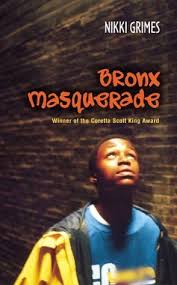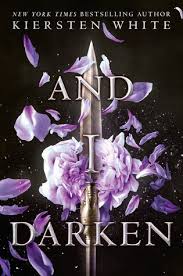
Sir Isaac Newton decided that instead of his usual stroll around the apple orchard one afternoon, he would take a bath and relax. As he soaked away his cares, he watched a bubble of air rising through the water. And had an idea. That led to King William III of England commissioning Capt. William Kidd to lead the first exploration of space to Mars in the 17th century, which in turn lead to the colonization of the red planet by the British.
In 1812, 16-year-old Arabella Ashby roams the Martian landscape and her father’s khoresh wood plantation. Raised and schooled by a Martian nanny, Arabella is not the proper young English lady her mother had hoped for, so she insists on returning her to London to live properly and respectfully. Not only does Arabella have to get used to the rules and restrictions of early 19th century England, but she also finds earth gravity to be a total b*tch.
Circumstances cause her to flee back to Mars aboard a Mars Trading Company ship, disguised as a boy and serving as both a deckhand and captain’s boy, in an effort to save her brother from an unexpected danger. Along the way, she encounters war and mutiny and automatons.
This novel started off with a lot of promise of adventure and fun. It ticks off every box on my list: steampunk, Jules Verne-esque, science fiction, space exploration, STUNNING cover, a kick-ass heroine. And I loved it, the writing, the story, the descriptions of the air battle, the life on Mars and Earth and onboard the airship Diana. Until about halfway through.
Because… Arabella isn’t really so kick-ass. She starts that way. A young girl raised on the Martian frontier, schooled in hunting and tracking, a girl with a scientific bent who shares her father’s love and affinity for automatons sounds like my kind of heroine. And I love the plot device wherein a girl disguises herself as a boy in order to accomplish an otherwise unattainable goal. But I think author David Levine missed an opportunity with this in his novel. Arabella’s purpose in disguising herself is to accomplish a goal, a goal she is quite capable of attaining as a young woman, but would never be given the chance to do so. When she is revealed as a girl, she is still as capable as the boy they thought her to be, but instead is treated as though she no longer can cope with space travel. And the problem I found is that she does not fight to keep her position, one she earned, but meekly accepts that things are no longer the same.
That is the first of the problems. The rest… oh boy. This is a science-fiction fantasy! The world can be anything the author wishes! And apparently, he wished for some historical accuracy, even as his sailing ships (which look pretty much like 19th century sailing ships with the addition of large silk balloons to get the vessels aloft) dodged asteroids and his airmen breathed the atmosphere between the stars. So as they did this, they were also racist and sexist and believed in the colonization of Mars and the superiority of the white British male over pretty much everyone, including the inferior Martians. Mars is the interstellar equivalent of colonial India. And in addition, Levine still ensures the reader knows that Indians, while human, are not as good as the Brits. And don’t get me started on the portrayal and description of Mills, the one black crew member.
The captain of the Diana, Captain Singh, is a flat, one-dimensional, polite, fair-minded, darker-skinned man. Nice, but sadly, that’s pretty much it. And the predominantly white crew is determined to overthrow him. And, for some reason, Arabella is attracted to him. And I do not mean that in a way that she shouldn’t be. I mean that in the way that the romance subplot doesn’t work. We have an adventure! Let’s leave it at that! The romance reads as if the author was actually ticking off boxes, and thought, hey, she has to fall for someone! We can’t have a young woman wanting to just make it on her own. Here’s a handsome guy with a good position, she can go for it. And given that the captain spent most of the book believing her to be a boy, the romance seems forced.
Why can’t we have a fantasy world without all these problems? I know there needs to be some conflict and tension to move the story along, but really? They turned me off, and turned what was a fantastic adventurous read into a teeth-grinding slog.
Levine’s world building skills are incredible. He has won awards for his stories, and no wonder. I travelled through space aboard the Diana with Arabella, floated in the zero-gravity atmosphere alongside the airmen, looked out and saw nothing but vast darkness sprinkled with tiny pinpoints of light. The battle with the French pirates had me on edge, and I didn’t know if we would find a solution to the navigational problem. Levine can weave a story that has you believing that it is only a matter of time before humankind is travelling through space, docking on asteroids to take on supplies, and landing on distant worlds. I just wish he had written a world where humanity could attain more than just another plot of land.
Arabella of Mars was published July 12th, 2016 by Tor.








